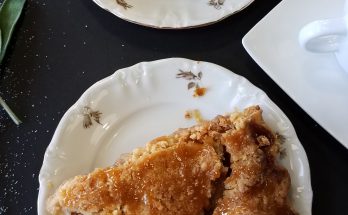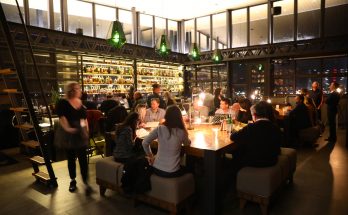I don’t know how to say joie de vivre in Spanglish, but I know I found it in San Antonio. It’s a delightful place to visit, especially if you have a passion for food, history, culture and eco-tourism.
The Alamo is a perfect symbol of the city: It looks small, but it looms large in the imagination. And the people don’t let the city’s popularity erode its authenticity. The San Antonio River may be hemmed in by stone walls, but it’s a real river with a silt bottom that old timers still fish. The River Walk may be packed with tourists and convention trade every night, but they’re rubbing shoulders with locals who also enjoy eating, drinking and playing there.
Diversity is an idea people play lip service to all the time, but in San Antonio, it’s for real and everywhere you look. There’s an Italian restaurant named after Mexican actress Dolores Del Rio that’s filled with belly dancers. That’s very San Antonio. So is having eggs with refried beans for breakfast while being serenaded by a lederhosen-wearing accordion player.
This is where Germans taught Mexicans how to make flour tortillas and drink beer, and where their great-grandchildren invented Tejano music out of old polka tunes. Cowboys, both black and white, owe their legendary skills to the Mexican vaqueros who taught them how to rope and ride. This mish-mash of cultures is evident in everything from the food to the clubs, music and museums, but most of all in the relaxed pace life seems to take. The people are friendly and enthusiastic about the pleasures of life — good food, drink, music and company — and that’s incredibly soothing. You can’t help but feel the tension in your shoulders loosening as you toast a friend during a catered barge dinner or ride a water taxi back to your hotel.
History is another intrinsic component of the city. Plans to extend the River Walk stem not from a desire to commercialize, but to reclaim the history of the San Antonio River and provide the community with a healthy 12-mile stretch of hike and bike trails. Engineers will channel the river back to its original path and restore the eco-system with native shrubs, trees and wildflowers. A section connecting the existing River Walk to the northern museum district will open late this May. By 2014, the River Walk will extend all the way south to the historic Spanish missions.
Must-see museums include the Witte Museum of Natural History, the Marion Koogler McNay Art Museum, the San Antonio Museum of Art and the Museo Alameda. The Witte has an interactive science treehouse, hands-on experiments and a garden kids will love, in addition to intriguing exhibits of art, ecology and local history. Plus, it’s located on the edge of Brackenridge Park, overlooking the river.
Theater fanatics have to make a pilgrimage to the McNay, which once was a private home and garden, to see the Tobin Collection of Theatre Arts. Comprised of nearly 9,500 objects spanning 400 years of history, the theater arts collection includes show posters, and set and costume designs. After seeing what’s on display there, explore the galleries of European and American 19th and 20th century art, take a breather in the central courtyard and stroll through the sculpture gardens.
The collection at the San Antonio Museum of Art, housed in the historic Lone Star Brewery complex, centers around the art of the Americas, including pre-Columbian, Spanish Colonial and Latin American folk art. But you’ll also find Egyptian, Greek, Roman and European art and artifacts as well as the largest concentration of Asian art in the southern United States. It’s located on the trolley line, so it’s really easy to get there from the River Walk area. But leave yourself plenty of time. The museum is massive, and you’ll be hard-pressed to cram in everything you want to see into an hour or two.
If you only have time for one museum, however, don’t miss the Museo Alameda, a national center for Latino arts and culture that was the first Smithsonian-affiliated museum outside of Washington, D.C. In addition to rotating exhibits of modern Latino art, the museum has a movie series and an authentic regalo shop, which was lovingly reconstructed with all its posters and potions in place. At the gift shop, you can buy “Make Tacos Not War” bracelets, tin shrines and locally made art and jewelry. The museum is part of the Historic Market Square/El Mercado area, which has two indoor shopping malls filled with booths selling Mexican peasant dresses, fringed cowboy vests, Mexican wrestler masks, saint medallions, Tex-Mex spices and so much more. Also on the square is Mi Tierra, a 24-hour bakery and restaurant that’s a local favorite and a great place to get serenaded by mariachi or trios.
If you’re more into the indie scene, head to the Blue Star Contemporary Art Center, home of the Blue Star Gallery, Joan Grona Gallery and San Angel Folk Art. Refresh your mind and spirit at the Blue Star Brewery, which has a pub menu, fresh brews and a small stage where improv groups and bands play occasionally. You also can rent bikes from the brewery to explore the surrounding Southtown Arts District or Spanish mission trail.
Start your last morning off right with breakfast at the Guenther House’s patio, where the hearty breakfast buffet is filled with treats made from flour ground across the street at the Pioneer Flour Mill. Inside the historic house, there are exhibits about the mill and a small gift shop for gourmands. After eating, stretch your legs by taking a tour of the King William Historic District, which is filled with Victorian homes, some of which may be available to tour.
And that’s just the tip of the iceberg. There also are winery tours, La Villita, the San Antonio Botanical Gardens, the Toilet Seat Museum, Sea World, the Tower of the Americas, cool nightclubs and farm-to-table restaurants. But don’t try to cram too much in. Pick your pleasure and follow your heart. The city has existed for centuries; it will last long enough for you to make a second trip.
For more information about attractions, accommodations, restaurants and entertainment, go to VisitSanAntonio.com.



